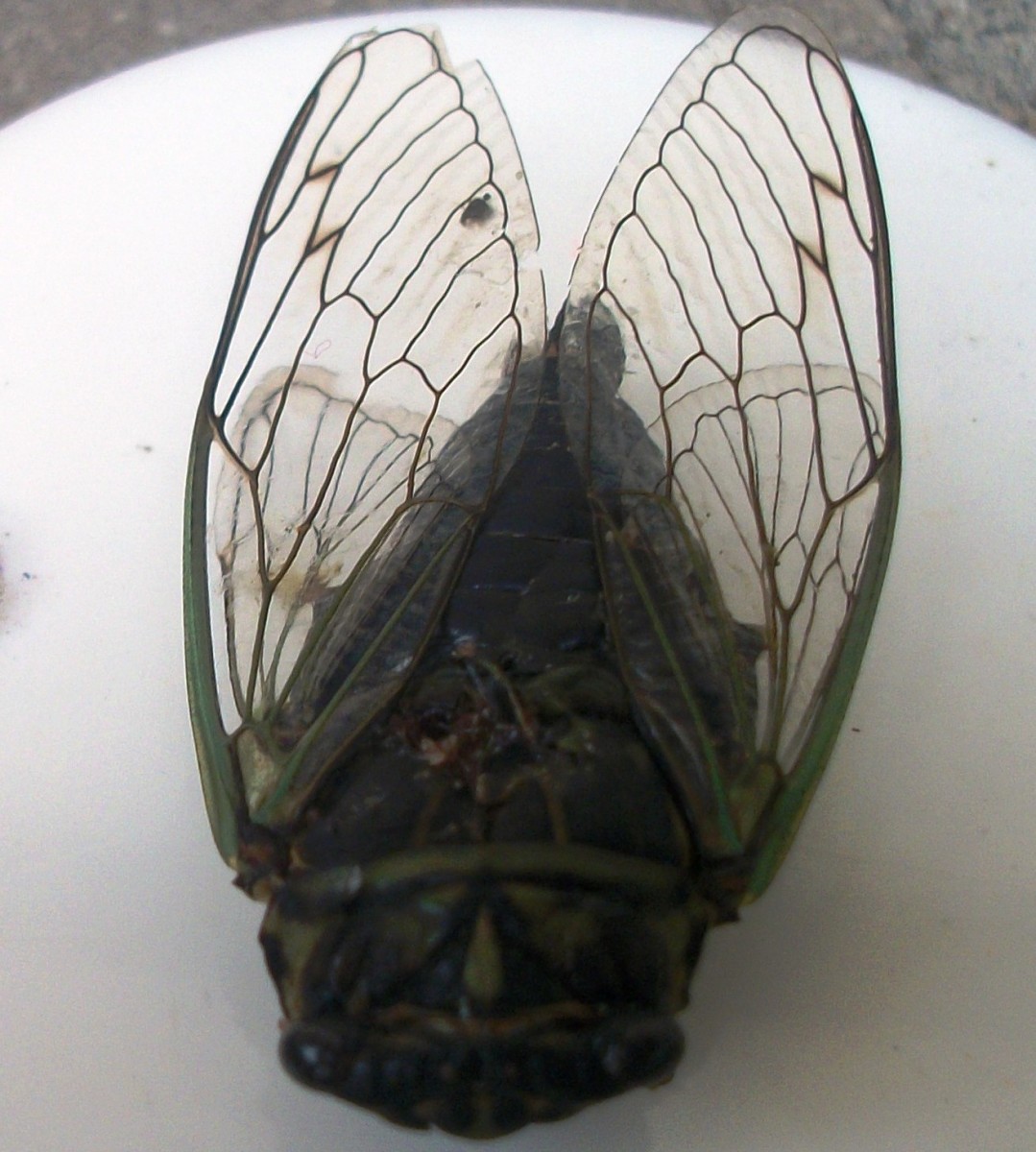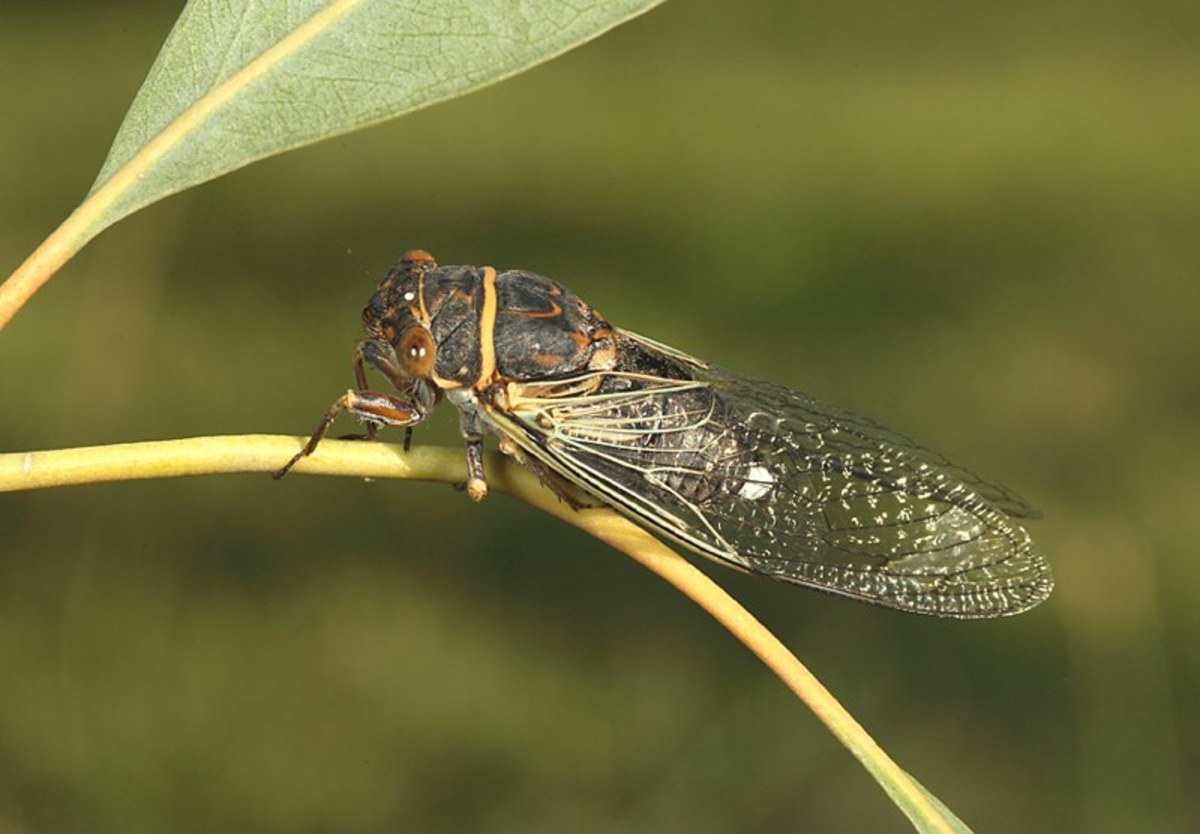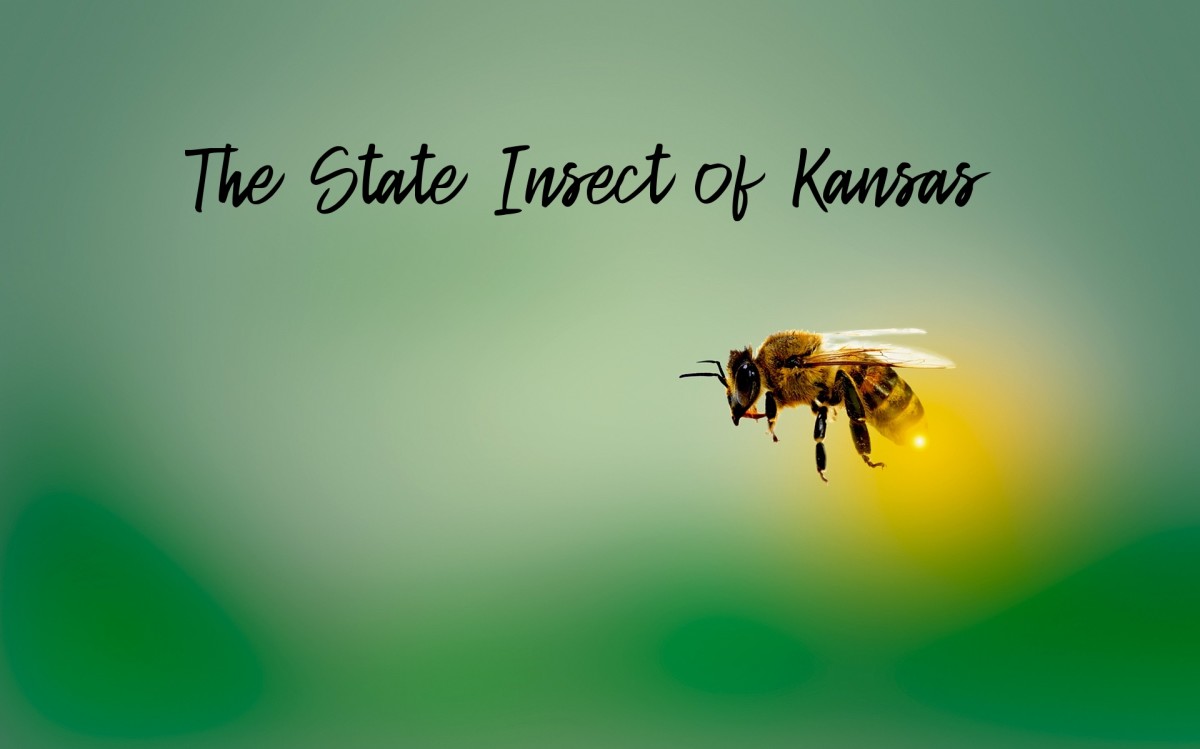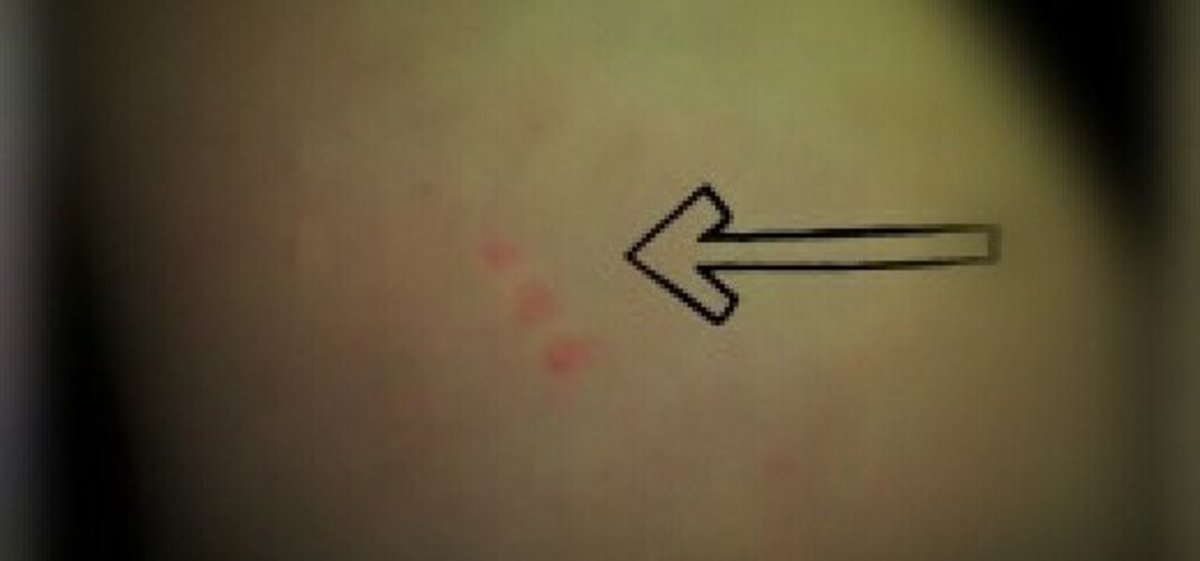- HubPages»
- Education and Science»
- Life Sciences»
- Entomology»
- Insects & Bugs
The Cicada
The Cicada
The Cicada
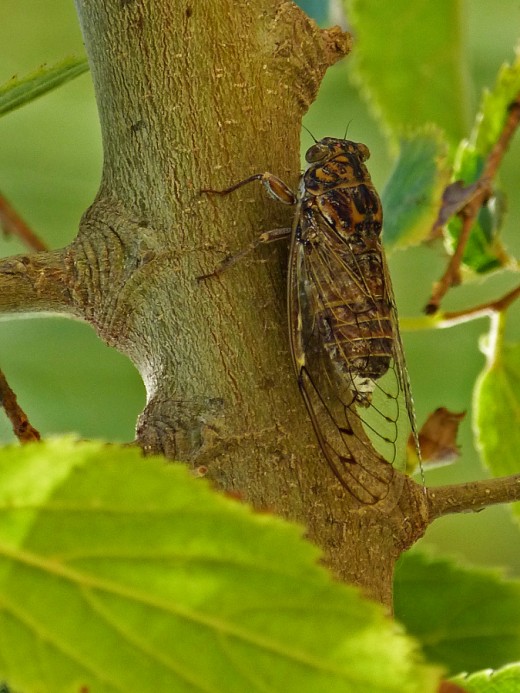
A design fault?
The cicada makes the very loud noise by stroking ridged membranes called tymbals that are located on the side of their abdomens.
According to what I have read the bellies of the cicadas are hollow which really helps to amplify the already loud noise.
There seems to be a design fault with this creature because the cicada’s tympana are also located on its abdomen. The tympana, which are what the cicada hears through, are located at the base of the abdomen.
I have just discovered that the Males can disable their own tympana while calling so problem solved and there is not a design fault just ignorance on my part.
The noise these creatures make can be deafening to human ears that are usually many feet away from the source, you would think that the cicada would deafen itself with its hearing located so close to the source of the noise.
The video below gives you an excellent idea of the sound the cicada makes. This particular cicada is American and looks a little different to the one we photographed but the sound it makes sounds just the same.
The Sound a Cicada makes
The Mating Call
The call is the males way of attracting females, the adult cicada seems to have just one thing on it s mind and that is to mate. The female will respond to the males call by making a clicking noise by flicking her wings. These clicking noises sound similar to when we snap our fingers.
Watch this video and see Sir David Attenborough click his fingers imitating the female cicada and watch the male turn to whatever direction the noise is coming from.
The male cicada following the sound of David’s snapping fingers lands on David’s head right near his ear. The noise is so loud that David begins to snap his fingers in an attempt to get the cicada away from his ear.
The sound produced by some species can reach levels as high as 120 decibels which is enough to be painful to the human ear which is easy to see from the reactions of David in the video below.
The cicada follows the sound of David snapping his fingers and lands this time on David’s hand. To watch this video click on the YouTube logo in the bottom right-hand corner of the video below. It is an excellent video and fascinating to watch.
The Life Cycle of the Cicada
Often heard but Seldom seen
Different species of cicada sing different songs, they do this so that they attract only the females from their own species. Cicadas will often sing their song with other cicadas this makes if difficult for a potential predator to single out and locate an individual cicada.
I had often heard the Cicada near our home but I had never seen one. That was until the day one flew in through our open door and hit the side of my husband’s head.
After striking my husband’s head the insect came to rest on our settee. My son picked up the insect that to me looked like a giant housefly and we placed it on the dinning-room table with a glass tumbler over it.
A Captive Subject
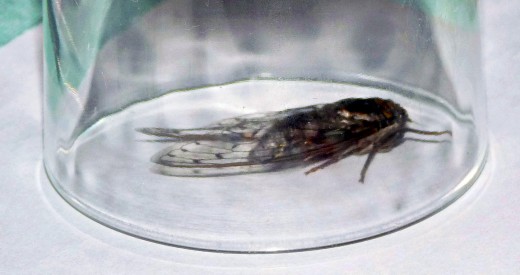
An Opportunity is Presented
My son and I are both keen photographers and so this presented us with an excellent opportunity to take some close up photographs of this often heard but seldom seen little critter.
Of course this is an opportunity that we took with both hands below are some of the photographs we took that day. After taking the photographs we took the cicada back to a tree where we had often heard cicadas and we let it go. As soon as it was in the tree it began to sing his song.
Our Cicada Photographs
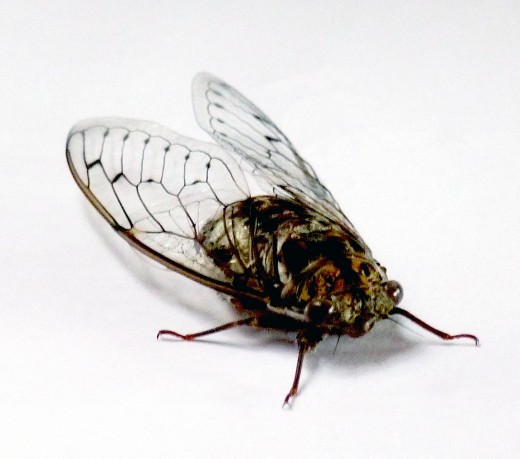
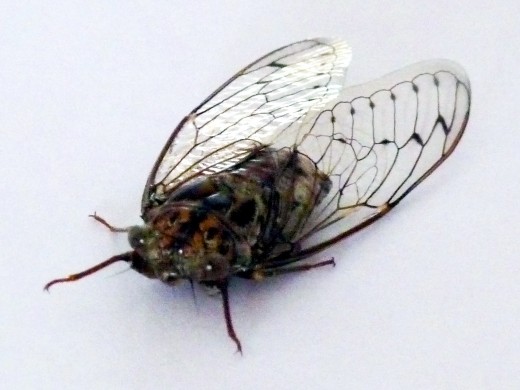
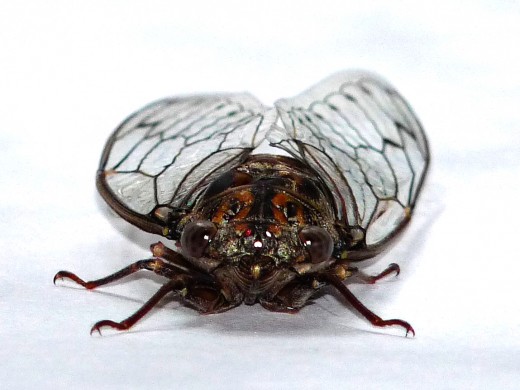
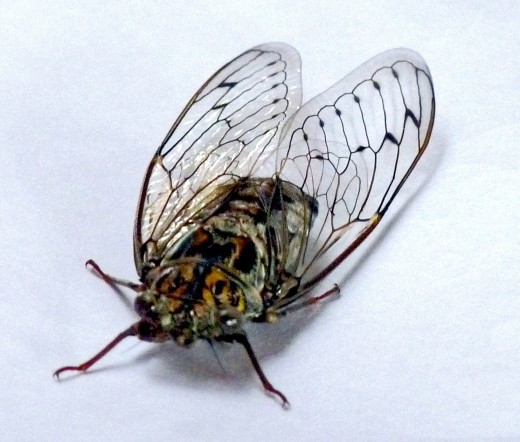
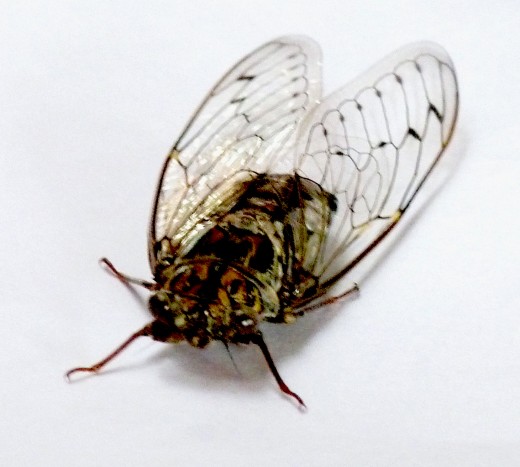
The Cicadas' Predators
The adult cicada has many predators’ birds; bats, crickets, ants, wasps, spiders and mantids are some of those just waiting for a chance to feast on these insects.
People in some cultures (for example China, Malaysia Burma ) also consider the cicada a delicacy the female being preferred, as she tends to be meatier.
After looking at this creature anyone is welcome to my share. It looks way too much like a giant housefly for me to consider it as a potential food source.
The video below has a Cicada Killer Wasp bringing a Cicada back to its burrow.
If you would like to find out more about the Cicada Killer Wasp I fully recommend that you read fellow hubber Richard Mark Gage's Hub Cicada Killer Wasp
Cicada Killer Wasp and Prey
Cicada Wings
The cicada has two pairs of wings the longer front pair of wings cover part of the shorter back pair. In the case of this cicada its wings are clear almost transparent much like the wing of a housefly but of course much larger.
The wingspan of a cicada can range anywhere between 2.5cm and 15 cm depending on the species.
The wings typically have a large number of veins running through them, which helps to stiffen and strengthen the wings.
Wings of the Cicada
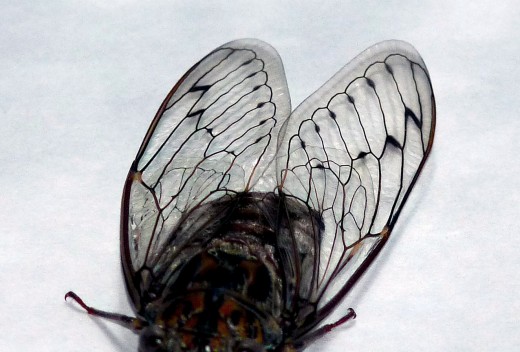
Cicadas do not sting or bite
There are around 2500 species of cicada world-wide, many of which have not been classified yet.
The cicada has a long proboscis hidden under its head that it uses to pierce the bark of the tree, which enables it to feed on the tree sap. Cicadas are generally benign when it comes to people and usually they do not or sting or bite.
Cicada
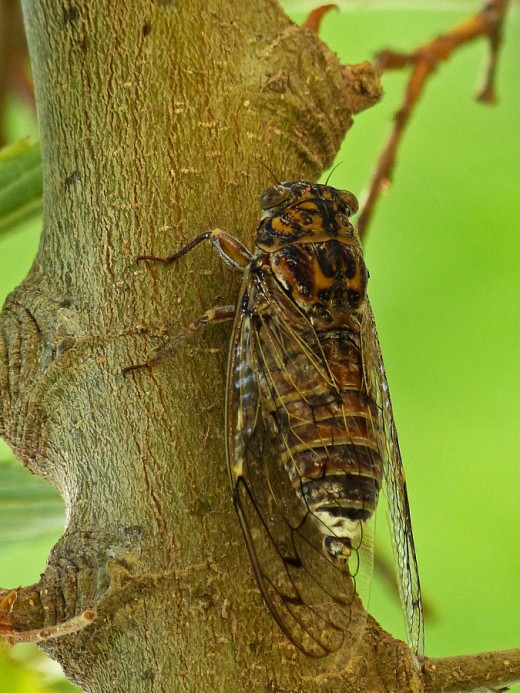
Cicadas don't bite unless they think you are a tree
However if a cicada lands on a person's exposed limb it can sometimes mistake the arm or the leg of that person for part of a tree.
When this happens they have been known to pierce the flesh of the person they have mistaken for a tree in the attempt to feed on the sap it mistakenly hopes to find there.
This can be painful but remember it is not an aggressive reaction from the cicada towards the person it has pierced. It is extremely rare for this kind of thing to happen and usually only happens when the cicada comes to rest on someone’s body for an extended period.
I have to say that in the real world an extended stay by a cicada would not happen on anyone that I know.
Most people that I know would freak out as soon as a cicada landed near to them never mind landed on them. As soon as a cicada landed on them they would frantically and immediately try to brush the cicada off of their person.
I was fortunate to come across a cicada on a tree it was very difficult to spot as they are very well camouflaged. I could hear two but no matter how hard I tried I could only find one.
Every time I got close they became quite and I found them difficult to locate. While I was photographing I never did find the other cicada. However, when editing the photographs later much to my surprise and joy there was the other cicada in shot but totally unseen by me at the time. Below are some of the photographs I took.
Cicada on a Tree
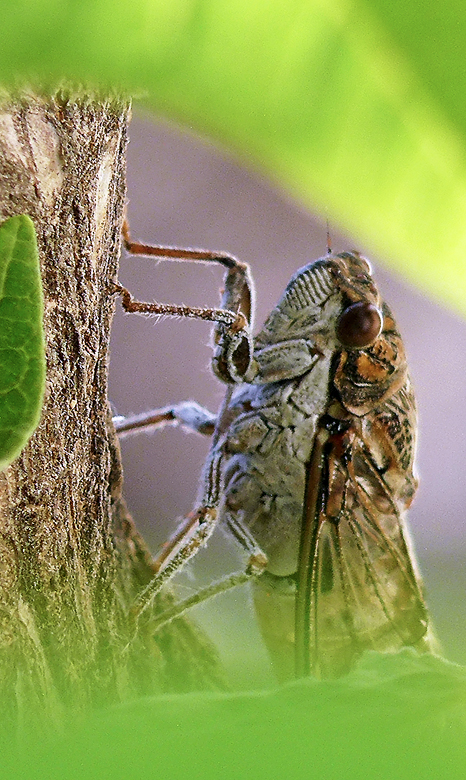
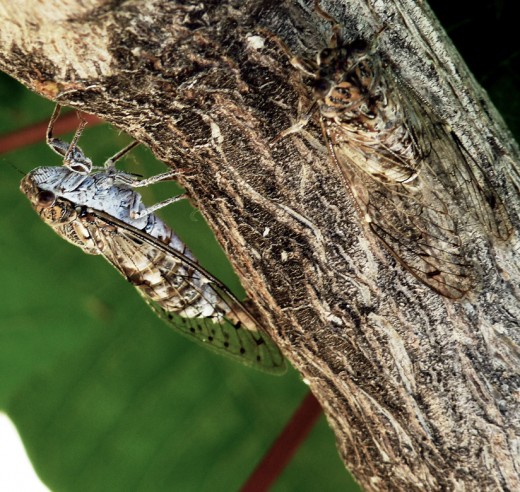
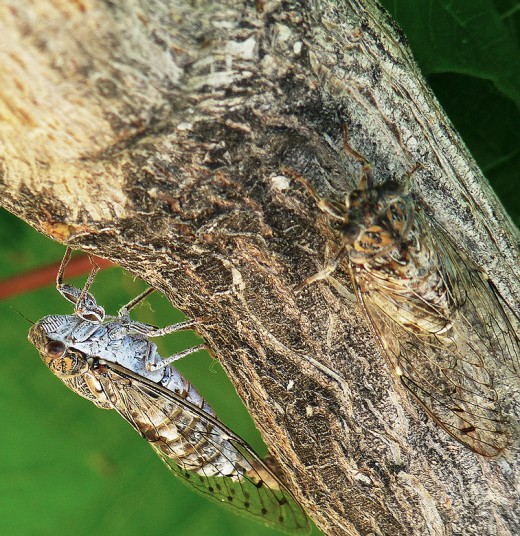
The Eyes of the Cicada
The Cicadas have large compound eyes that are situated one on each side of the head.
In addition to the two large compound eyes they have three very small glistening simple eyes (ocelli) on the top of the head centred between the two compound eyes.
I hope that you can make out the three small eyes grouped together in the photographs below
Eyes of the Cicada
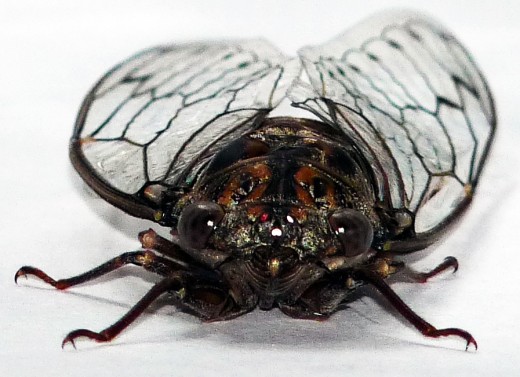
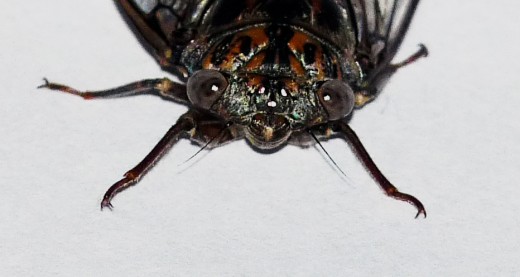
Life as an Adult
The Cicadas’ adult life is only a very short stage and its main purpose is to mate and lay the eggs so that there will be a new generation that will begin this cycle all over again.
Once the adult female has mated she will seek out the bark of twig in a tree and cut slits into it. Into these slits she will deposit her eggs. She will continue cutting slits and laying eggs until she has laid around two hundred eggs.
Nymph to Adult
When the eggs hatch out into nymphs they will remain for a while in the slit where they were laid sucking on the sap of the branch.
After a short while the newly hatched nymphs falls to the ground and they begin to burrow. They are trying to get down to the root system of the tree where they will live as nymphs until they are ready to emerge for the final moult.
The nymph stage of the cicada can last anything between two and seventeen years depending on the species. They feed during this time on the root of the tree by sucking juice from the root.
The majority of the cicada’s life is spent underground as a nymph living at depths ranging from 30 cm – 2.5 metres. The nymphs have strong front legs that they need in order to dig their way out for their final moult when they become the adult cicada.
When it is time for them to moult for the final time they dig an exit tunnel to the surface. Once they emerge on the surface they crawl to the nearest plant or bush and climb up onto it and attach themselves.
Here they moult for the final time splitting open the skin and struggling out from their old skin leaving just a husk behind. Once free of their old skin blood is pumped into their new wings and they remain there until their wings dry and harden.
Cicada Husks
Not too long ago the countryside around where I live was littered with these husks we bought one of these husks still attached to the twig home where we photographed it.
Here are the photographs of the Cicada husk, just look at how detailed the husk is you can even the hairs on its legs.
Cicada Husks
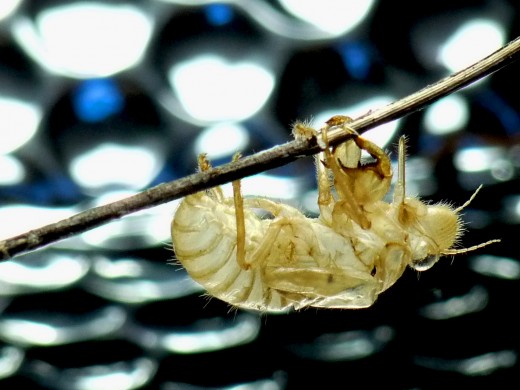
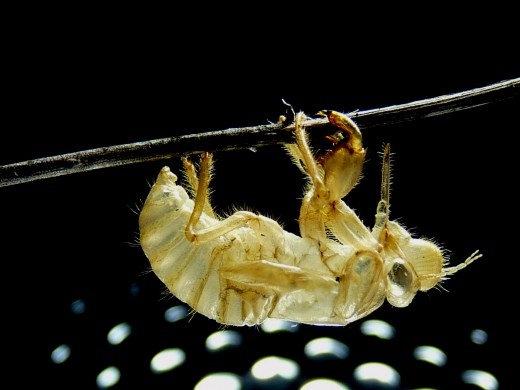
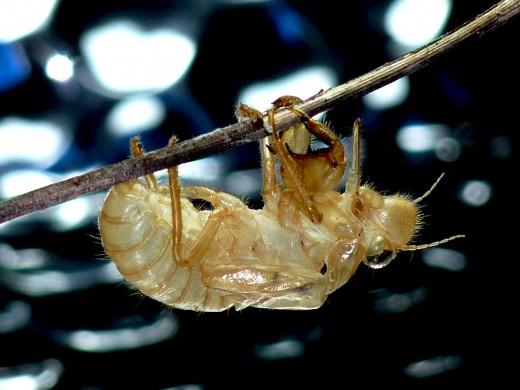
Then the cycle begins all over again. Well I hope that you have enjoyed learning something about this fascinating insect I know I did.
Insect Based Hubs
If you enjoyed this Hub you might like my other insect based Hubs.
- The Life Cycle of the Dragonfly - In this hub I want to look at the life cycle of the Dragonfly and I suppose that the best place to start is at the very beginning. This is where it all begins;
- The Cicada - The Cicada is a member of the order Homoptera and the noise that just one of these creatures can make is amazing. The name cicada actually comes from the Latin word for buzzer. It is the male of this species that makes the loud clicking and buzzing noise by vibrating membranes on their abdomens.
- The Caterpillar of the Pine Processionary Moth
- In the area of Spain where I live there is a pesky little critter that is a real nuisance at this time of year it is the caterpillar of the Pine Processionary Moth.

